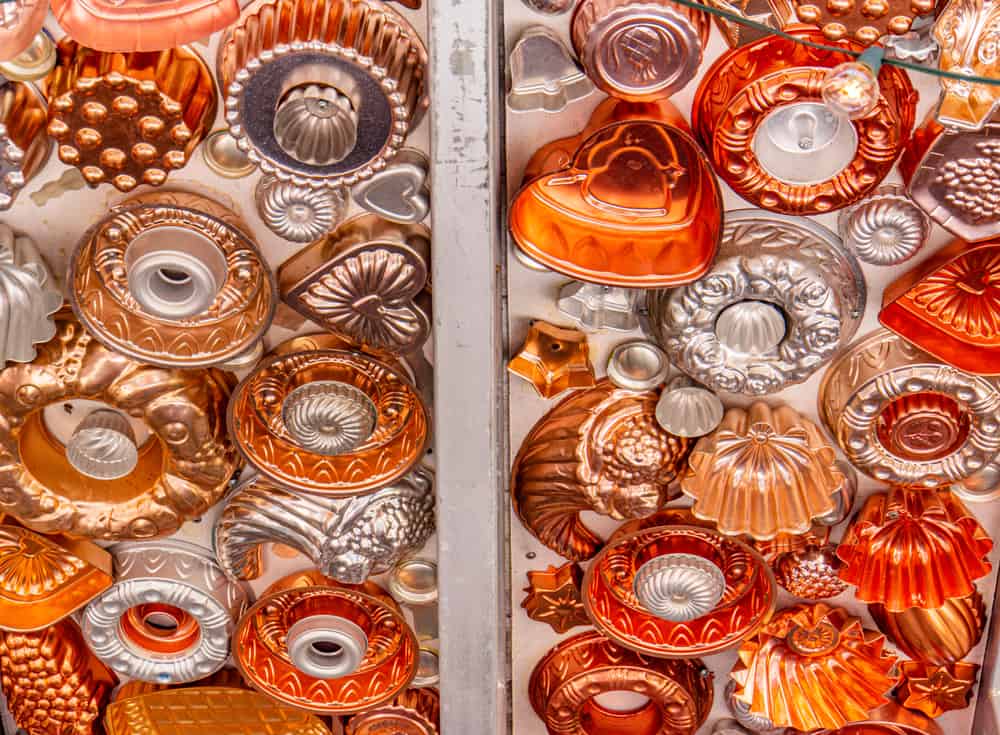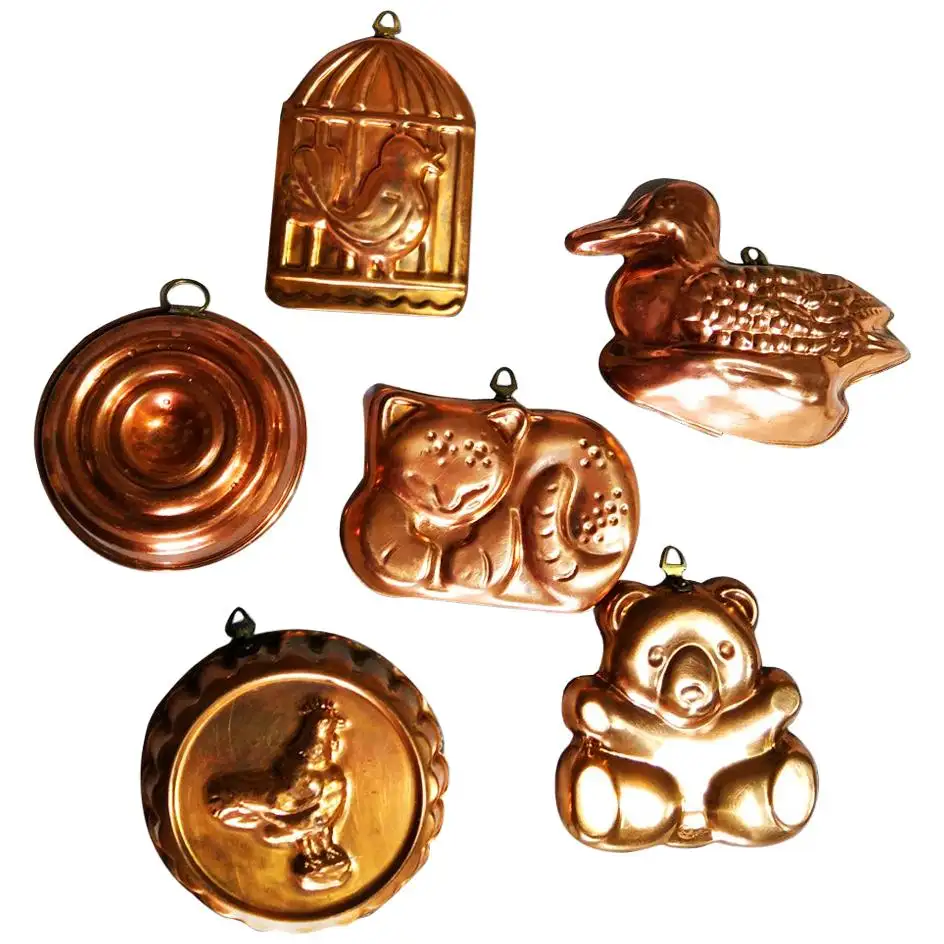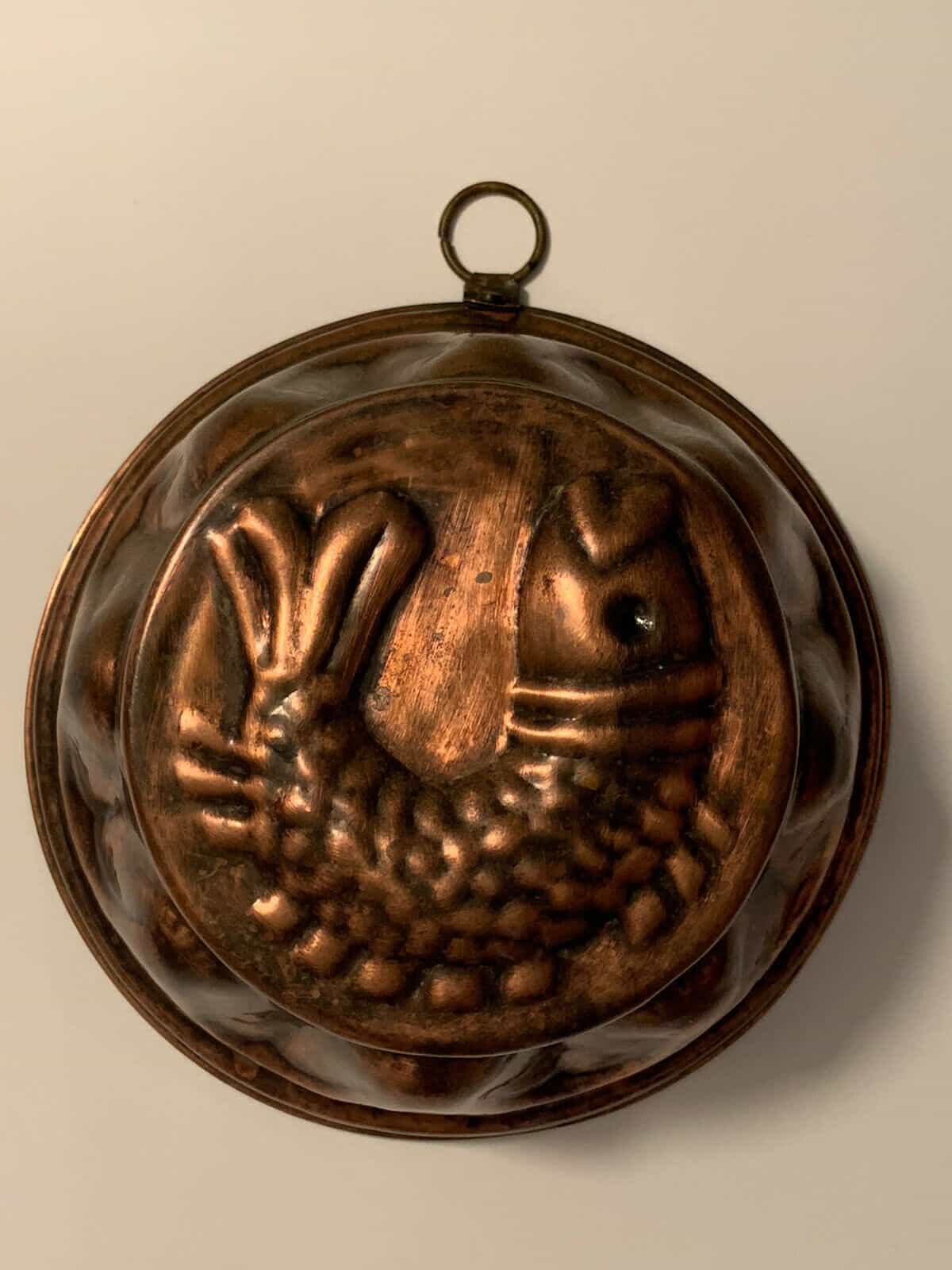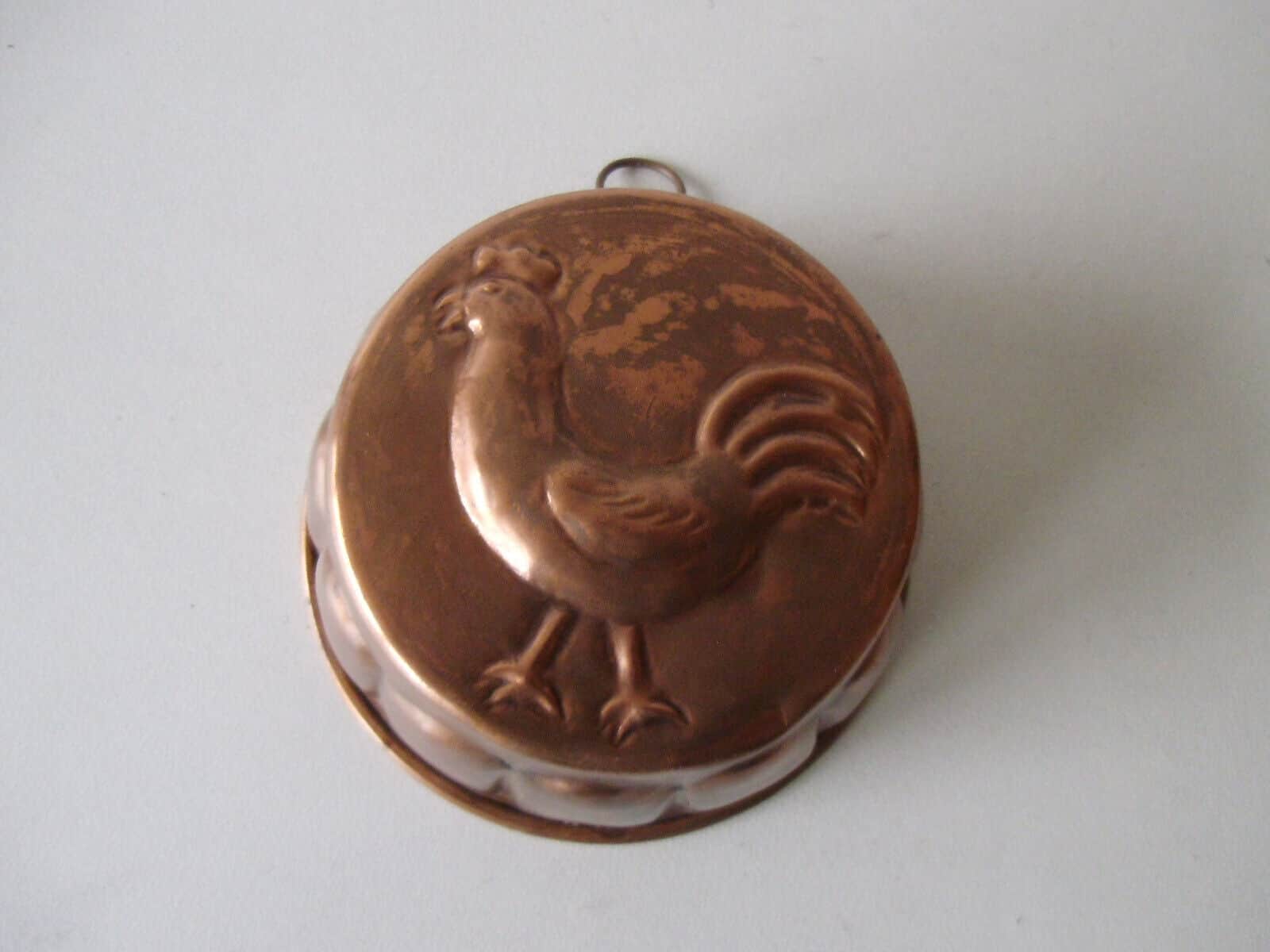Popular ever since the Victorian era, copper molds transformed how people cooked and baked – from jello to Christmas cake, desserts, and more.
Made from durable copper, molds have a signature shape, style, and design. This diversity makes the molds highly collectible by bakers, chefs, and antique collectors.
And with recent design trends repurposing molds as decorations, they’re bought by fashion-savvy homeowners who want to add some vintage charm to their homes.
So dust off your old kitchen shelves and get searching. Check behind those cupboards and in your attic – everyone has an iconic copper mold somewhere in their home. We’re going to show you just how much money they can be worth!
Table of Contents
History of copper jello molds
Copper molds were popular from the Victorian era onwards for several reasons.
The first was that copper mining was at an all-time high and became more available to the public. With more raw materials, smiths began experimenting with designs, shapes, and practical uses for copper in everyday homes.
Because they are a soft metal, copper was easy to decorate, with many designs mirroring popular themes from the Victorian era. These include sports (like hunting), and nature scenes like cherry or grapes.
At the time, copper was more expensive than similar metals like tin or aluminum. You might think this would sway Victorians from buying them – but the opposite is true. They bought copper molds as a sign of their wealth and superiority.
Copper molds mirrored mainstream culture. In the 1910s, for example, molds were inspired by the Art Nouveau movement and copied famous architecture and buildings. By the 1920s, they were heavily inspired by Art Deco and had cleaner, straighter lines, and simple shapes.
What are jello molds used for?
Copper jello molds have many different uses in modern homes.
Making jello
It may seem obvious, but it’s worth remembering that these copper molds are still useful for making jello! Not only that, but they can also help make cake toppers, small pies, and other decorative baking goodies like cookies and biscuits.
Repurposed decorations
More often though, copper molds are bought because interior designers or fashion-forward homeowners want to repurpose them.
Smaller molds can make amazing:
- center-piece dishes,
- storage containers for craft items like ribbons, buttons, and thread.
- if you drill a small hole in them, they can also work as small inside planters.
A larger mold can also be used as a bowl, cake pan, or casserole dish. Some people even place molds upside down to hold pillar candles in.
More recently, designers are buying classic copper molds in bulk to create wall art – by simply hanging the mold on a hook to display. They use spray paint to hide discoloration and achieve a good look.
How do you clean copper jello molds?
Copper is a popular material for a wide array of kitchen items. And although it can look tarnished after a while, there are remedies to help combat it.
Firstly, is the black residue dirt? No, not quite. Copper reacts to oxygen creating a layer of natural copper oxide. Although it’s not dirty, it can be unpleasant looking.
Although there are professional cleaning products which will blast away any tarnish, we strongly advise against it. Jello molds are food utensils, and mixing chemicals with them isn’t advisable.
We recommend using natural chemicals whenever possible. Most of what you need will already be in your kitchen. And remember, copper is not oven-safe, so avoid using any heat and hot water when cleaning.
So what can you use instead? Here are some natural suggestions:
- Vinegar and Salt: Vinegar is acidic, and when mixed with salt, will easily remove copper oxide. Mix 1 tablespoon of salt with 1 cup of vinegar. Use a soft cloth to pat your mold dry.
- Ketchup: Ketchup is naturally acidic, and again when combined with our magical ingredient salt, can be quite effective against tarnish. And because it forms a paste, it can be easily spread across molds.
- Lemon: Another common acid found around the house is lemon. Simply cut one in half, and pour it on the tarnish alongside salt, to form a paste. Rinse, dry, and marvel at your squeaky clean molds!
How do you identify antique copper jello molds?
As with any antiques, there are some ways to properly identify who made your antique copper mold, where, and when. Having this information at hand when selling an antique can increase its value tremendously.
So, what should you look out for?
Maker’s marks
Maker’s marks are logos, brandings, serial numbers, or any sign an symbol that tells you who the manufacturer was. The Old Copper website has a database of most copper manufacturers.
An example of this is popular copper manufacturers Benham and Sons. Their marks include a signature orb, a triple diamond, and a stylized leaf. On the other hand, Shelley potteries from England have a distinct crown logo.
Design
Some manufacturers used similar designs for a variety of their work. Other molds mirrored what were popular design topics for the time and place.
For example, this collection of copper molds worth $316, does not have any maker marks – but because of its style and themes, auction site 1stDibs states it’s from Spain.
The value of copper jello molds
Copper jello molds are modest antiques. We’ll be honest with you – you most likely won’t be able to retire from selling them.
But, they can surprise you, and part of the fun in collecting them is finding that diamond in the rough. Collectors today may show a sudden interest in jelly molds in the future.
Molds may sell between $10 to $30. Selling them as part of larger collections may allow some wiggle room in your profit.
Below are some factors which may increase your mold’s value:
Excellent condition
Like any copper antique, jello molds can get damaged.
Scratch marks and cracks can reduce the mold’s value at auction, and because of the small, delicate nature of the mold, they can be hard to repair.
The mold design itself should also be in good condition. Because bakers often tapped on the outside to push the jello out of the mold, it can get dented or distorted.
- This 20thcentury mold of a copper fish is listed as in excellent condition and is worth $35
- This Chicken—inspired copper mold is also labeled as in excellent condition, and is worth slightly more than average at $50
Attractive designs
Some people buy copper molds, not to make jello, but to repurpose them as wall art. Simply put – the nicer and clearer the design, the more valuable it becomes.
Popular themes include trees, plants, animals, geometric designs, and nautical creatures.
- This antique hunting dog copper mold is worth $15
- This antique lobster copper mold is worth $24
- This scallop-shaped copper mold is worth $33
- This spiralized Victorian copper mold is worth $93
Maker’s marks
As we’ve said already, maker makers are an important way to identify copper molds. But quite often, copper molds didn’t have any distinguishable marks. Many n
For the few molds that do, it can increase their value drastically. This 19th-century Benham copper mold, for example, is worth an incredible $324.
Even if the mark is undeniable, it might still increase the mold’s value. For example, this lobster mold has the makers mark ‘76’ which the owner could not identify. Even so, its estimated worth is upwards of $150.
Similarly, this Victorian pudding mold has the maker mark ‘616’ on it. While we don’t know what this number relates to, it adds a certain value to the piece regardless and is currently worth $344.
Where can I buy and sell copper jello molds?
Copper jello molds can appear everywhere. From charity shops and yard sales to baking stores, and more.
But perhaps the easiest way to buy and sell them is through online stores. 3 sites we highly recommend you check out include:
eBay –many different copper mold listings are posted every day. Prices are generally quite low at $10-$20, creating a great opportunity to buy cheap jello molds to resell.
Etsy – as one of the most popular interior design sites worldwide, Etsy is very popular for copper jello molds. Prices are that little bit higher at between $20-$50.
1stDibs – this premium auction site doesn’t have many copper molds, but can give you a good idea of the potential rare molds can have. Some lots are valued as high as $300.



